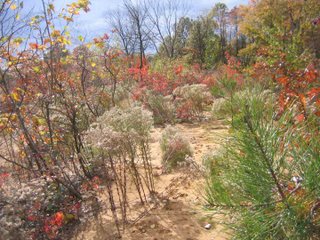Natives for Invasives
This is a great new publication - there are lots of natives I hadn't thought of using in a horticultural situation. I do have a suggestion for improvement, however. There should be some kind of warning regarding use of Celastrus americana where people need to make sure these plants are purchased from a trustworthy source and labelled properly. Their exotic breathren are very similar and so hard to differentiate - especially the M. rubra. It's for exactly that reason that I tend not to recommend them to the average native plant gardener. That said...
Native Alternatives to Invasive Plants is an indispensable guide for everyone who loves dazzling gardens and cares about the health of North America's natural landscapes. Invasive plants, the overwhelming majority of which are not regionally native, brazenly spread unchecked across residential landscapes, parks, preserves, roadsides, and other wild lands, supplanting native species and ultimately threatening the ancient biological communities in their path. In fact, most scientists now consider invasive species to be one of the top two threats to this planet's native plants and animals (the other is habitat loss). Invasive species cause major environmental damage amounting to almost $120 billion a year. Yet invasive plants are still commercially available, and a few of them remain wildly popular. Japanese barberry, for example, is one of the hottest-selling plants in the nursery trade, and Norway maple is one of the most widely planted trees in the country.








